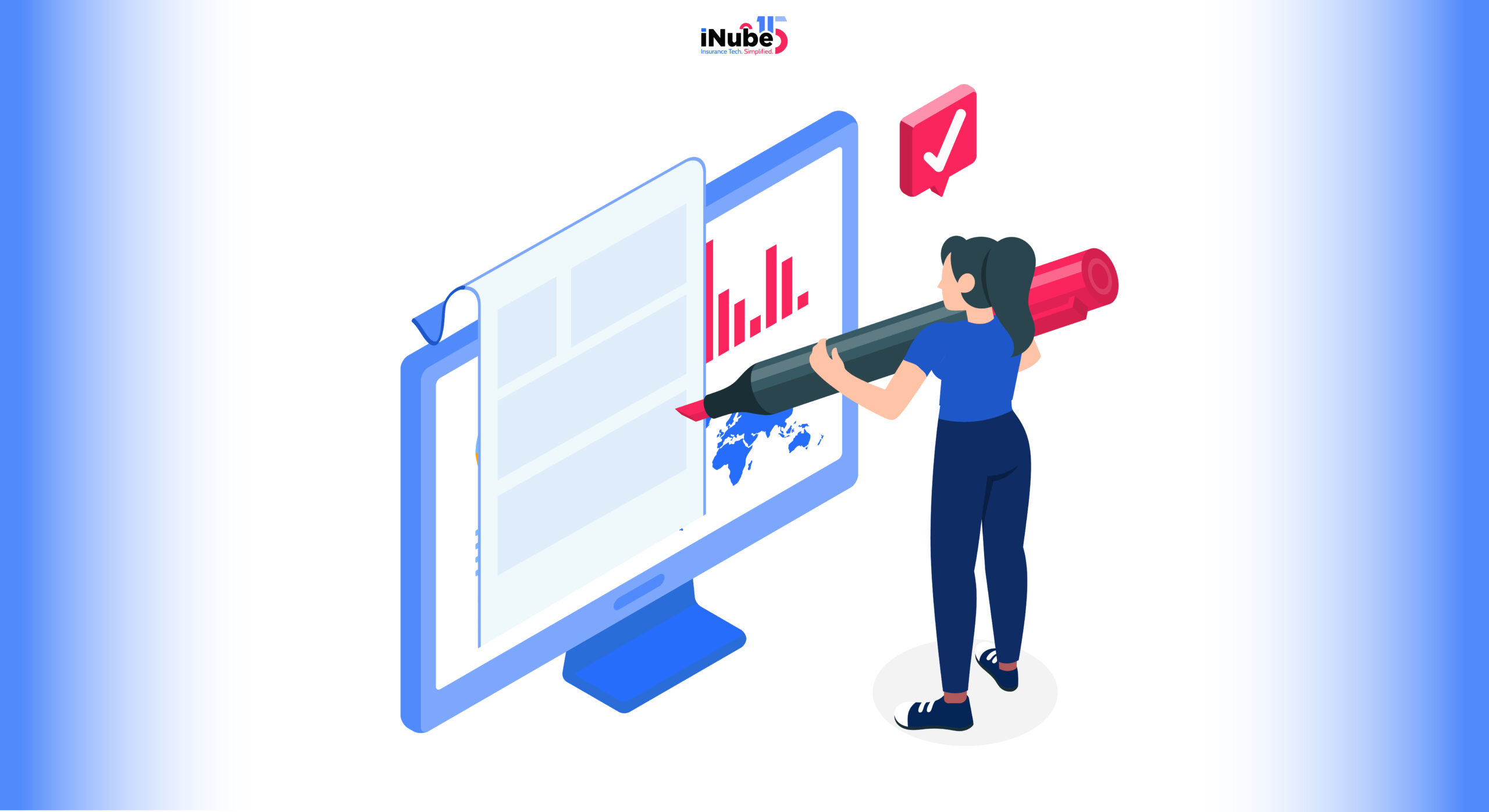With the emergence of AI, one fear has always been posed in the minds of insurers- ‘Will AI replace us?’ The answer to this question remains simple- No! However, with AI in place, processes will be streamlined and not entirely wiped out of human touch. For instance, underwriting is a tedious job that requires analyzing multiple documents and doing in-depth risk analysis to give quotes but think of it with AI. What’s the first word that strikes your mind with AI in underwriting? Fast!
This is what is experienced by underwriters who leverage AI to do risk analysis. So, is human-in-the-loop completely obsolete with AI? The answer remains negative again. AI algorithms will not just be scrutinizing risks but also empower the underwriters to catch risks that they would have otherwise missed.
The Critical Role of Human-in-the-Loop in Modern Underwriting
In 2025, the insurance industry is standing at a technological crossroads. While AI in insurance automation brings the promise of unprecedented operational efficiency, the question remains- Can these systems truly be able to replace the nuanced judgment that experienced underwriters bring to complex risk assessment? The answer does not lie in replacement, but in partnership through the human-in-the-loop approach.
The modern underwriting departments are now exploring that the future of underwriting is not just about choosing between human expertise and machine learning, but rather it’s about strategically combining both to create superior outcomes. This is a hybrid model that will significantly address the growing customer expectation in insurance, both in speed and accuracy, while also maintaining the critical thinking that is necessary for complex risk evaluation.
Only Resorting to Automation? Time to Rethink
Do you think resorting to automation alone will only help in improving operations? That might not be true. Automation excels at processing routine applications, handling data verification, and flagging obvious risks for fraud detection. These are the systems that will help in analyzing thousands of data points within seconds, while dramatically improving the operational efficiency for straightforward cases. But automation has its own limitations; AI algorithms can struggle with nuanced scenarios that require contextual understanding and human judgment. Think of these situations that involve:
- Limited historical data in most of the emerging business models
- International operations in volatile markets
- The complex family enterprises with multi-generational ownership structures
- The unique risk profiles do not fit the standard algorithmic parameters.
These are the situations where an experienced underwriter’s ability to interpret context, assess the intangible factors, and make judgements that are based on industry knowledge becomes more irreplaceable. This human-in-the-hoop approach will ensure that these complex cases receive appropriate attention while also allowing automation to handle the routine processing.
The Power of Human AI Collaboration
Most of the leading insurance companies are implementing human-in-the-loop systems, which essentially leverage the strengths of both automation and human underwriter expertise. This is a collaborative approach that will typically involve:
Human Underwriter Oversight for Complex Scenarios
These scenarios become important when the cases essentially require a nuanced interpretation and strategic thinking. The experienced underwriters will be able to take the lead on non-standard risk profiles that essentially demand a more contextual understanding, applications with missing or inconsistent information that essentially require investigative skills, high-value policies that need a strategic assessment beyond the algorithmic capabilities, and cases flagged by fraud detection systems that again require further investigation and human judgment for determining the legitimacy.
This division of labor will be significantly helpful in improving operational efficiency, while also ensuring that the complex cases will receive the thorough analysis that is required to meet the customer expectations in insurance.
Automated Processing for Routine Cases
Leveraging automation processing for routine cases forms the foundation of modern underwriting operations. These are the systems that essentially manage the standard risk profiles with complete documentation, process applications that essentially fall within the established parameters, conduct basic data verification and also fraud detection screening, and offer initial risk scoring with term recommendations.
This automation will ensure that there is operational efficiency for straightforward cases while also maintaining consistency in decision-making.
The Irreplaceable Value of Human Expertise
Despite the advances in AI in insurance, there are certain aspects of underwriting that remain fundamentally human, and this includes:
Strategic Thinking
Assessment of the long-term market trends and their impact on risk.
Relationship Building
Developing trust as well as understanding with insurance agents and with customers.
Ethical Decision-Making
Navigating through the complex situations where there are multiple stakeholders’ interests requires a balance.
Creative Problem-Solving
Finding innovative solutions for unique risk scenarios.
This human-in-the-loop approach essentially recognizes these capabilities, which are not just valuable but also essential to the future of underwriting.
What are the Implementation Best Practices?
The organizations that are looking to implement a successful human-in-the-loop underwriting system would essentially consider:
Clear Role Definition
Establishing the specific criteria for when cases will need human intervention, along with automated processing.
Technology Training
This ensures that the underwriters understand how to effectively use and interpret AI in insurance system outputs.
Continuous Monitoring
There must be regular assessment of the performance in both automated systems and human decisions for optimizing the balance.
Feedback Loops
Important to create systems for underwriters to offer input on automation performance, and also to enable continuous improvement.
The Way Forward
The conversation around automation should not be focused on replacement; rather, it should be focused on partnership. The human-in-the-loop approach will represent the future of underwriting, offering a collaboration of speed and efficiency of automation with the irreplaceable judgment and expertise of experienced underwriters.

Archismita Mukherjee
Insurance Content Analyst

